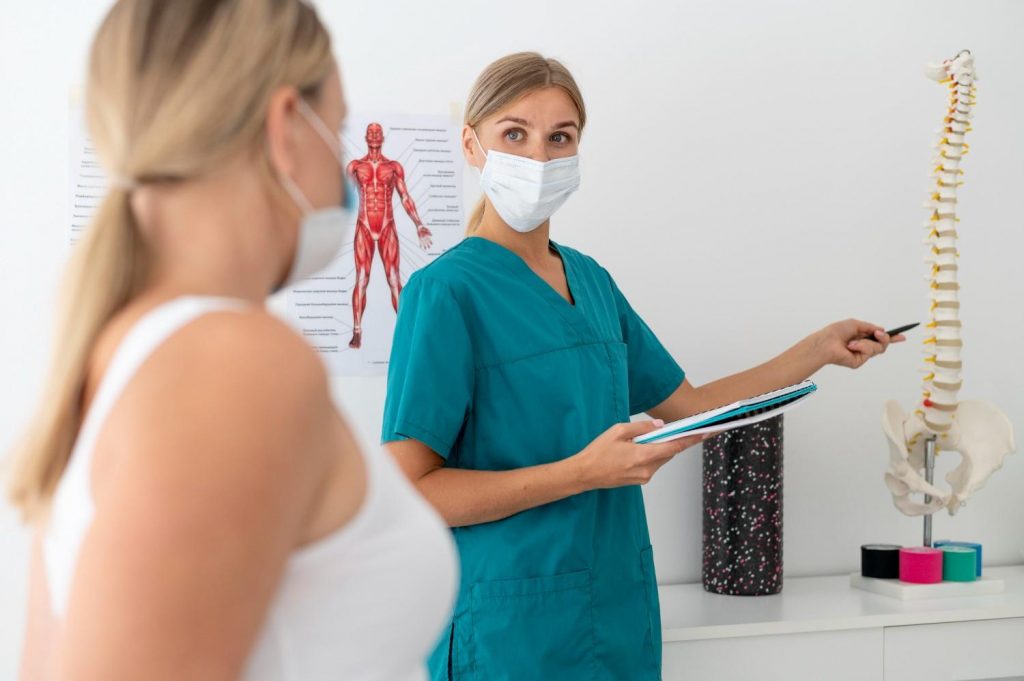
We shall explore the complexities of osteochondrosis in this extensive post, illuminating its causes, symptoms, and available treatments. Osteochondrosis is a medical disorder that mostly affects the bones and joints of the musculoskeletal system. Given that this ailment can have a substantial influence on a person’s mobility and quality of life, it is crucial to fully comprehend it. Together, let’s investigate the realm of osteochondrosis.
1. What is osteochondrosis, exactly?
A medical disorder called osteochondrosis is defined by the abnormal growth of bones and cartilage in joints. Although it can happen to adults, it primarily affects children and adolescents during their development spurts. Common sites for this ailment to show up include the spine, hips, and knees.
2. Osteochondrosis Types
2.1 Juvenile osteochondrosis
Teenagers and developing youngsters are often affected by juvenile osteochondrosis. It frequently affects the knee joint and can cause discomfort, edema, and restricted range of motion.
2.2 Adult osteochondrosis
Adults can also have osteochondrosis, a condition typically brought on by joint wear and tear. This particular variation of the illness frequently impacts the spine and may cause persistent discomfort.
3. Osteochondrosis causes
We don’t fully understand the precise causes of osteochondrosis. However, a number of factors, including genetics, trauma, and metabolic considerations, can play a role in its development.
4. Symptoms and Signs
4.1 Aches and Pains
Osteochondrosis is characterized by chronic pain and discomfort in the affected joints. From mild to severe, this pain may get worse with activity.
4.2 Limited Range of Motion
Osteochondrosis patients may have restricted range of motion in the afflicted joint, making daily tasks difficult.
4.3 Joint Swelling
Another typical sign of osteochondrosis is swelling around the afflicted joint. Pain and stiffness might be exacerbated by this swelling.
5. Osteochondrosis diagnosis
A medical history, physical examination, and imaging tests like X-rays and MRIs are frequently used to diagnose osteochondrosis.
6. Available Therapies
6.1 Rehabilitation
Osteochondrosis management requires the use of physical therapy heavily. It emphasizes promoting mobility, lowering discomfort, and enhancing joint function.
6.2 Medication
Anti-inflammatory drugs and painkillers are frequently administered to reduce osteochondrosis-related discomfort.
6.3 Surgical Interventions
In extreme circumstances, surgical procedures may be required to replace or repair broken bone or cartilage.
7. Preventative Actions
7.1 Upholding a Healthful Diet
Bone and joint health can be supported by a well-balanced diet rich in vital minerals like calcium and vitamin D.
7.2 Consistent Exercise
Regular exercise can help develop muscles and protect joints, especially low-impact exercises like swimming or cycling.
7.3 Posture Sensitivity
Osteochondrosis risk can be decreased and additional stress on joints can be avoided by maintaining excellent posture.
8. Managing osteochondrosis
Living with osteochondrosis can be difficult, but with the correct approaches and assistance, people can continue to lead satisfying lives.
9. Coping Techniques
Osteochondrosis can be physically and emotionally taxing, therefore coping may include asking loved ones and medical professionals for help.
10. Case Research
Analyzing case studies from real-world situations can help us understand how people with osteochondrosis live their lives.
11. New discoveries and developments
A better knowledge of osteochondrosis and novel treatment options are being made possible by ongoing research in the field.
12. Expert Perspectives
Leading authorities in orthopedics will be interviewed and share their insightful knowledge about osteochondrosis.
Conclusion
Osteochondrosis is a challenging medical disease that needs consideration, understanding, and care. We aim to empower individuals and their families to better manage this condition and enhance their quality of life by examining its causes, symptoms, and available treatments.